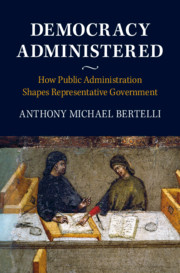Emanuel Adler’s 1997 article ‘Seizing the Middle Ground: Constructivism in World Politics’ is the most highly cited effort to position constructivism on a terrain between the dominant mainstream theories of neorealism and neoliberalism and their critical theoretic challengers. More than this, it is a constellation point for ideas Adler had advanced in earlier writings, and that he would develop to great effect over the coming two decades, most notably in his magnum opus, A Social Theory of Cognitive Evolution (Cambridge: Cambridge University Press, 2018). This chapter explores the difficulties of holding the middle ground through a reading of Emanuel’s writings over the past three decades. I draw a distinction between two different approaches to seizing the middle ground, which I term, for want of better words, singular and dualist. The former, as part one details, is found in Martin Wight’s tripartite distinction between realism, rationalism, and revolutionism. This distinction is noteworthy because it is at once a typology of different ontological positions, arraying theories with very different assumptions about the nature of the political universe, and a classification of different views of the potential for normative change, or progress. The second, dualist approach separates questions of ontology from those of progress, imagining two middle grounds. Exemplified in Alder’s work, the first middle ground is between the ideal and the material and the individual and structural. But when Adler discusses progress, which is a prominent and enduring theme in his work, he introduces a second, less remarked upon, middle ground. In his early work he called this position ‘humanist realism’, locating it between stasis, on the one hand, and utopianism, on the other. The difficulties of holding the middle ground in singular approaches is apparent in Hedley Bull’s constant back and forth over the relative priority of the values of order and justice, a relationship central to rationalism’s location between realism and revolutionism. The difficulties of the dualist approach are evident in Emanuel’s shifting reconciliations between his two middle grounds. In his early work, reconciliation was to come through a condominium between constructivism and communitarian normative theory. In his most recent work, it comes through the concept of practice. Neither of these reconciliations are entirely satisfactory, however, and I conclude by suggesting three possible ways of better combining the ontological and the normative.
